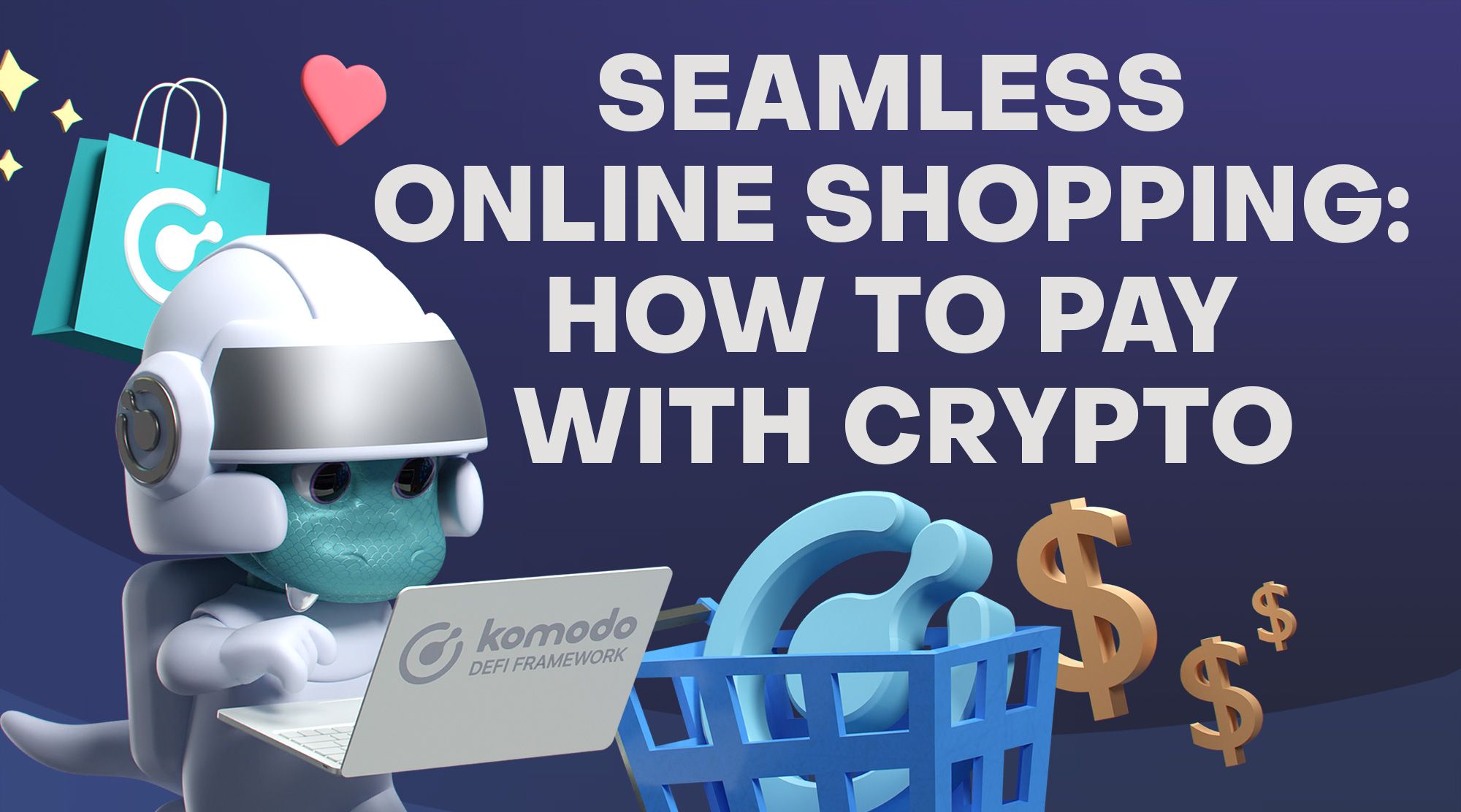Seamless Online Shopping: How to Pay with Crypto
1
0

This article explores paying for online transactions with crypto and highlights the ease and convenience it brings to the realm of e-commerce.
Key Takeaways for Crypto Payments
Cryptocurrency transactions begin with acquiring digital assets. Users can easily buy cryptocurrency with traditional fiat currency on various exchanges such as Komodo Wallet. These platforms unite the traditional financial system and the decentralized world of cryptocurrencies. Once you have your digital assets, a cryptocurrency wallet becomes your essential tool for transactions.
Cryptocurrency wallets are digital containers for your digital assets. They are designed to securely store, send, and receive cryptocurrencies. The beauty of these wallets lies in their compatibility with various cryptocurrencies and exchanges.
Whether you're dealing with Bitcoin (BTC), Ethereum (ETH), or any other altcoin, a good wallet can handle the diversity of your digital portfolio.
Moreover, the number of retailers accepting crypto payments is on the rise. From online giants to local businesses, the acceptance of cryptocurrencies as a valid form of payment is gaining momentum. This growing trend indicates a shift toward a more inclusive and decentralized financial ecosystem.
How to Make a Payment With Cryptocurrency
Making a payment with cryptocurrency involves a straightforward process. Once you've acquired the desired amount of digital assets, you simply need to initiate a transaction through your wallet.
This process typically includes entering the recipient's wallet address, specifying the amount, and confirming the transaction.
Cryptocurrency transactions are conducted on blockchain networks, ensuring security and transparency. The decentralized nature of these transactions means that no central authority controls or monitors them, providing users with a sense of autonomy over their financial activities.
Acquiring Cryptocurrency for Payments
To make payments with cryptocurrency, you first need to acquire digital assets. Cryptocurrency exchanges with fiat on-ramps play a crucial role in this process. These platforms — such as Komodo Wallet — allow users to convert their fiat currency (such as USD, EUR, or GBP) into popular cryptocurrencies like Bitcoin or Ethereum.
When using these platforms, it's essential to adhere to security measures. Choose a strong password, and consider using a hardware wallet for added security. These precautions safeguard your digital assets against potential threats.
Choosing the Right Wallet
Selecting the right wallet is paramount for a smooth cryptocurrency payment experience. Wallets come in various forms, including mobile, desktop, web, and hardware wallets.
Each type caters to different user preferences and security needs.
For everyday transactions, a software wallet on your computer or mobile device might be sufficient. However, for enhanced security and protection against online threats, a hardware wallet — a physical device that stores your cryptocurrency offline — offers a more robust solution.
Where to Pay With Cryptocurrency
The adoption of cryptocurrency payments is expanding across both online and brick-and-mortar establishments.
Major online retailers, such as Overstock and Shopify, now accept cryptocurrencies. Additionally, some forward-thinking brick-and-mortar stores are embracing this digital payment method.
Popular travel agencies, food delivery services, and even coffee shops are joining the crypto revolution.
As the trend continues, more businesses are likely to follow suit, providing consumers with a broader range of options for spending their digital assets.
Pros and Cons of Paying with Cryptocurrency
Paying with cryptocurrency comes with its own set of advantages and challenges. On the positive side, cryptocurrency transactions offer a degree of anonymity, as users aren't required to disclose personal information during the process.
Peer-to-peer network transactions eliminate the need for intermediaries, reducing transaction fees and enhancing financial efficiency.
However, the volatile nature of cryptocurrency prices poses a challenge.
The value of digital assets can fluctuate significantly over short periods, leading to potential gains or losses for users.
Additionally, once a transaction is confirmed on the blockchain, it is irreversible. While this ensures security, it also means that mistakes in transactions cannot be rectified.
Practical Guide: Paying with Your Crypto Wallet
To maximize the convenience of paying with cryptocurrency, consider the following practical tips:
- 1. Keep your wallet secure: Implement security measures such as strong passwords to protect your digital assets.
- 2. Stay informed about market trends: Given the volatility of cryptocurrency prices, staying informed about market trends can help you make more informed decisions when it comes to spending your digital assets.
- 3. Choose the right wallet for your needs: Evaluate your preferences and security requirements to select a wallet that aligns with your priorities.
- 4. Verify transaction details: Again, it’s crucial to emphasize that crypto transactions, unlike fiat transactions, can’t be reversed. Before confirming a payment, double-check the recipient's wallet address and the transaction amount to avoid errors.
Conclusion
The era of seamless online shopping with cryptocurrency is upon us. With the ability to buy digital assets with fiat currency, the diverse range of wallets available, and an increasing number of retailers accepting crypto payments, the landscape is evolving rapidly.
While paying with cryptocurrency offers greater anonymity and lower fees, users must also navigate challenges such as price volatility and transaction irreversibility. By remembering the points in this guide, it'll be easier to enjoy the convenience and efficiency that crypto brings to the world of online shopping.
Online Shopping with Komodo Wallet
There are two ways you can use Komodo Wallet for commerce — as a consumer or as a merchant.
First, if you're a consumer, you can use Komodo Wallet's fiat on-ramp options to convert your local fiat currency to a number of different cryptocurrencies. Then, you can use crypto to either pay merchants directly or top-up your balance on a payment solution such as a crypto debit card. A few producers of crypto debit cards include Binance, Coinbase, Crypto.com, BitPay, and Wirex.
Second, if you're a merchant, you can directly accept crypto payments via Komodo Wallet. Then, you can either use the wallet to store crypto or use Komodo Wallet's built-in decentralized exchange (DEX) to trade one crypto for another crypto.
Try Komodo Wallet today!
1
0






